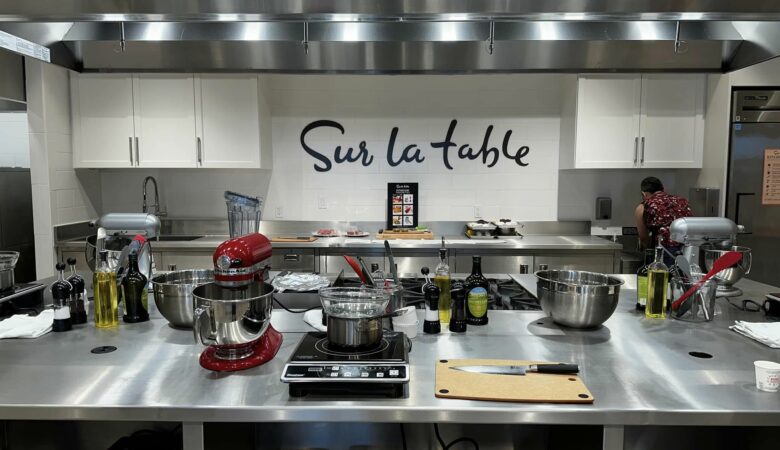
Welcome to Whiskyworld, where each sip tells a story and every bottle holds the promise of adventure! Have you ever wondered what goes into crafting that perfect dram? From the lush green landscapes of Scotland to the sun-kissed hills of Kentucky, whisky production is an art form steeped in tradition, passion, and a sprinkle of science. In this blog post, we’ll pull back the curtain on the intricate process behind one of humanity’s most cherished spirits. Join us as we unveil the secrets of whisky production—discover how master distillers transform simple ingredients into liquid gold and learn about age-old techniques that have been passed down through generations. Whether you’re a seasoned connoisseur or just starting your journey into the world of whisky, get ready for an enlightening exploration that promises to deepen your appreciation for this timeless elixir! Cheers! 🥃✨
Introduction to Whiskyworld
Whiskyworld is a realm where tradition meets craftsmanship, and every bottle tells a story. For centuries, whisky has captivated enthusiasts with its rich flavors and complex aromas. From the rolling hills of Scotland to the vibrant distilleries of Japan, this beloved spirit holds significant cultural value across the globe. As you sip on your favorite dram, have you ever wondered about the secrets behind its production? Join us on an intriguing journey through Whiskyworld as we unravel the fascinating history of whisky making. Discover how various cultures revere this amber elixir and learn about the intricate processes that transform simple ingredients into liquid gold. Whether you’re a seasoned connoisseur or just starting out on your whisky adventure, there’s always something new to explore in this world of warmth and wonder. Let’s dive in!
Brief history of whisky production
Whisky’s roots stretch back centuries, with its origins often traced to the ancient Celts. Distillation techniques were introduced from various cultures, blending tradition and innovation. The first written record of whisky production dates back to 1494 in Scotland. A decree by King James IV authorized the production at a monastery, marking a significant moment in history. Scotland quickly became synonymous with whisky, developing distinct styles that still thrive today. The Irish also played a pivotal role in shaping whisky’s narrative. As trade routes expanded, so did knowledge about distilling practices. This exchange fueled growth across continents—each region adding unique flavors and characteristics. Prohibition in the early 20th century presented challenges but ultimately sparked innovation within the industry. Today, whisky is globally adored—a symbol of craftsmanship and cultural heritage that continues to evolve with every sip taken.
The significance of whisky in different cultures
Whisky holds a revered place in various cultures around the globe. In Scotland, it’s more than just a drink; it’s woven into the fabric of society. Traditions like whisky festivals and distillery tours celebrate its rich heritage. In Japan, whisky has transformed from an imported curiosity to a national pride. Japanese distillers combine traditional techniques with local ingredients, creating unique expressions that have gained international acclaim. In Ireland, whiskey is often associated with storytelling and gatherings. Pubs serve as communal spaces where friends share laughter over a glass of smooth Irish whiskey. Meanwhile, American bourbon stands tall as a symbol of Southern hospitality. Distilling methods passed down through generations create distinctive flavors that reflect regional identities. Every culture adds its own touch to how whisky is enjoyed—whether sipped slowly or mixed into cocktails—making it a universal spirit with diverse meanings across borders.
The Process of Making Whisky
Whisky production is a meticulous art that starts with four primary ingredients: water, malted barley, yeast, and sometimes additional grains. Each element plays a critical role in developing the spirit’s unique character. The first step is mashing, where hot water interacts with crushed grains. This process converts starches into sugars. Next comes fermentation. Yeast consumes these sugars and produces alcohol along with various flavors. Distillation follows, typically done twice in copper pot stills or continuously in column stills for higher efficiency. The heated mixture separates alcohol from impurities through vaporization. Once distilled, whisky enters the aging phase. It’s placed in wooden barrels—often oak—which impart rich flavors over time as it breathes through the wood’s pores. The interaction between spirit and barrel creates complexity that defines each whisky’s profile uniquely. This entire journey transforms raw ingredients into a beloved beverage cherished worldwide.
Ingredients used in whisky production

Whisky production starts with a few essential ingredients that transform simple grains into a complex spirit. The primary players are water, malted barley, yeast, and sometimes other grains like corn or rye. Water is vital. It’s not just for mashing; the mineral content can affect flavor profiles significantly. Distilleries often source their water from natural springs or rivers known for their purity. Malted barley is the heart of many whiskies. It’s soaked in water until germination begins before being dried in kilns to halt the process. This creates enzymes that convert starches into sugars during fermentation. Yeast comes next, working its magic by consuming sugars and producing alcohol along with various flavors and aromas. Different strains impart unique characteristics to the final product. Occasionally, distillers experiment with other grains such as wheat or corn for blended whiskies, adding more variety and depth to this beloved drink.
Distillation process
The distillation process is a pivotal step in whisky production. It transforms fermented mash into the spirit we savor. This method involves heating the wash—a mixture of water, yeast, and grains—allowing alcohol to evaporate. As it rises, those vapors travel through a condenser where they cool down and return to liquid form. There are two primary types of stills used: pot stills and column stills. Pot stills create richer flavors while column stills produce higher alcohol content efficiently. Each distillation run captures different fractions known as “heads,” “hearts,” and “tails.” The heart is what distillers aim for; it contains desirable flavors that define the whisky’s character. Precise temperature control during this process is essential. Too high or too low can alter flavor profiles dramatically, highlighting why skilled craftsmanship remains key in every batch produced.
Aging and maturation process
Aging and maturation are crucial in whisky production. Once distilled, the spirit enters oak barrels, where it undergoes a fascinating transformation. The wood interacts with the whisky, imparting flavors like vanilla, caramel, and spice. The barrel itself has a story—the type of wood and whether it’s new or previously used can influence the final product. Temperature fluctuations cause the liquid to expand and contract within the barrel. This movement draws more flavor from the wood over time. Typically, whiskies spend years maturing in these casks. Some distilleries even opt for decades-long aging processes to develop deep complexities. During this time, unwanted compounds evaporate through what is known as “the angel’s share.” This loss is bittersweet but contributes to refining quality characteristics that enthusiasts cherish. Ultimately, patience plays a vital role in creating an exceptional whisky experience—a true testament to craftsmanship.
Varieties of Whisky in Whiskyworld
Whiskyworld is rich with diverse styles that cater to every palate. The primary distinction lies between single malt and blended whisky. Single malts are crafted from one distillery using only malted barley, offering a purer expression of the region’s terroir. Blended whiskies, on the other hand, combine multiple grain and malt whiskies. This approach creates a harmonious flavor profile that appeals to both novices and connoisseurs alike. Regions also play a vital role in shaping whisky characteristics. Scotch from Islay is renowned for its peaty smoke, while Speyside whiskies often boast fruitier notes like apple or pear. Japanese whiskies have gained international acclaim for their meticulous craftsmanship and delicate flavors. Each variety tells a unique story rooted in tradition, geography, and innovation—a true testament to the art of whisky production.
Single malt vs. blended whisky
Single malt whisky comes from one distillery and is made exclusively from malted barley. This dedication to purity results in a rich, complex flavor profile that showcases the unique characteristics of its origin. Each sip offers a glimpse into the craftsmanship behind it. On the other hand, blended whisky is a harmonious combination of different single malts and grain whiskies. This blending process allows for consistency and balance. The art lies in creating something greater than the sum of its parts. While single malts offer a deep dive into terroir, blends bring together diverse notes for broader appeal. Fans often appreciate each for what it represents—individuality versus collaboration in every glass. Both types hold their own charm within Whiskyworld’s vast landscape.
Regional variations and their characteristics

Whisky is a global treasure, with each region boasting its own unique characteristics. Scotland leads the charge with five distinct whisky-producing regions: Islay, Speyside, Highland, Lowland, and Campbeltown. Each offers different flavor profiles that reflect local ingredients and traditions. Islay whiskies are known for their peaty smokiness. These robust spirits often carry notes of sea salt and brine—an echo of the rugged coastline they hail from. In contrast, Speyside whiskies tend to be sweeter and fruitier. Think ripe apples or rich honey; these delicate flavors showcase the area’s lush landscapes. Highland whiskies offer diversity within their borders. From light floral notes to deep sherry influences, there’s something for everyone. Lowland expressions are generally soft and grassy—a perfect introduction for newcomers. Meanwhile, Campbeltown boasts a maritime quality that’s both complex and intriguing. Each sip tells a story of place—a true reflection of whisky’s rich heritage across continents.
Exploring the Tasting Notes of Whisky
Whisky tasting is an art form, rich with nuance and depth. Each sip can transport you to different landscapes and moments in time. Understanding the language of whisky can elevate your experience significantly. Start by observing the color; it hints at age and cask type. Swirl it gently in your glass to release its aromas. Take a moment to inhale deeply; you’ll discover notes ranging from fruity to smoky, or perhaps even floral. When tasting, let the whisky linger on your palate. Notice how flavors unfold – sweet caramel may dance alongside spicy oak. It’s all about finding those subtleties that resonate with you. Don’t hesitate to jot down what you sense as this helps train your palate over time. Sharing thoughts with fellow enthusiasts creates connections too, revealing new perspectives and favorite finds along the journey into Whiskyworld’s vast landscape of flavors.
Understanding the language of whisky tasting
Whisky tasting is an art, and like any craft, it comes with its own vocabulary. Understanding this language can elevate your experience. You might hear terms like “nose,” which refers to the aroma you detect when you bring the glass close. It’s all about those initial scents that set the stage for what’s to come. Then there’s “palate,” referring to how a whisky feels in your mouth—smooth, spicy, or perhaps oily. Each sip reveals layers of flavor waiting to be uncovered. Don’t overlook “finish.” This describes the lingering taste left after swallowing. A long finish often hints at complexity and quality. With practice, you’ll learn to articulate your impressions clearly. Sharing notes with fellow enthusiasts adds depth to discussions and enhances appreciation for every dram. Embrace this rich lexicon; it makes whisky tasting even more rewarding.
How to properly taste and evaluate whisky
Tasting whisky is an art that requires more than just a sip. Start by observing the color. Is it golden, amber, or deep mahogany? Each hue tells a story of its age and cask influence. Next, take a moment to inhale the aroma. Gently swirl your glass before bringing it to your nose. Notice the layers of scents—fruity, smoky, floral—or even spicy notes that might emerge. When you take that first sip, let it linger on your palate. Pay attention to the mouthfeel; is it creamy or oily? Explore the flavors as they unfold: sweetness from caramelized sugars, hints of vanilla or rich spices. Don’t rush this process; allow each element to reveal itself fully. After swallowing (or spitting), consider the finish—the aftertaste can be long and complex or short and crisp. Engaging with these details enhances appreciation for each unique dram you encounter.
Behind the Scenes: Visiting a Whisky Distillery
Step into the enchanting world of whisky production by visiting a distillery. The moment you cross the threshold, you’re enveloped in rich aromas—sweet malt and earthy wood mingle in the air. Guided tours often take you through each stage of whisky creation. From mashing to fermenting, every detail is fascinating. You’ll witness massive copper stills gleaming under soft lights, where magic truly begins. Meeting the experts adds another layer to this experience. Distillers share their passion and knowledge with infectious enthusiasm. You can ask questions that reveal secrets behind their craft. Many distilleries also offer tasting sessions right where it all happens. Sample unique expressions straight from casks while learning about flavor profiles and aging techniques. As you explore each room filled with barrels, time seems to stand still—a testament to tradition and skill honed over generations. It’s an unforgettable journey for any whisky lover or curious traveler alike.
A virtual tour through a distillery

Imagine stepping into a whisky distillery, where the air is thick with the sweet aroma of grains and oak. As you enter, giant copper stills gleam under warm lights, each holding secrets of their own. The journey begins in the mash tun, where water mingles with milled barley. You can almost taste the anticipation as fermentation kicks off in wooden washbacks. Yeast bubbles away enthusiastically, transforming sugars into alcohol. Next, you’ll witness the heart of distillation—the spirit safe—where liquid gold emerges for its first time. This is where master distillers carefully monitor every drop to ensure perfection. As you wander through aging warehouses lined with barrels, sunlight filters through dusty windows. The deep notes of aged whisky whisper stories from years gone by that only time can tell. Each barrel holds a unique character waiting for discovery on your palate.
Meeting the experts behind the scenes
Stepping into a whisky distillery feels like entering a realm of craftsmanship. Here, the air is rich with history and passion. The heart and soul of this world lie in the hands of its experts. These artisans have dedicated their lives to mastering the intricate dance between science and tradition. Each one carries stories that weave through generations, showcasing their unique journeys within whisky production. You might meet a master distiller who talks about his first experience with fermentation as if it was love at first sight. Or perhaps an innovative blender whose creative flair has given birth to remarkable new flavors. Their enthusiasm is infectious. As they share insights on grain selection or barrel aging techniques, you’ll grasp how every decision shapes the final product. Engaging with these knowledgeable individuals transforms your understanding of whisky from mere enjoyment to appreciation for artistry behind each bottle.
Pairing Wh
Pairing whisky with food can elevate your tasting experience. The right combination enhances flavors, creating a delightful harmony. When it comes to pairings, consider the type of whisky you’re enjoying. For instance, a rich single malt often complements dark chocolate or grilled meats beautifully. The smoky notes in an Islay whisky can be balanced with strong cheeses or savory barbecued dishes. Blended whiskies offer versatility and can easily match various cuisines. A blend might go well with spicy Asian dishes or even classic comfort foods like burgers and fries. Don’t forget about desserts! Light whiskies can work wonders alongside vanilla ice cream or fruit tarts, making for an unexpected but delicious pairing. Experimentation is key here. Everyone’s palate is unique, so don’t shy away from trying different combinations. You might discover surprising favorites along the way that enhance both your meal and your drink of choice. Whether you’re hosting a dinner party or simply enjoying a quiet evening at home, thoughtful pairings will enrich your whisky journey in Whiskyworld. Indulge in these experiences as you explore the depths of flavor this spirit has to offer—there’s always something new waiting to be discovered.










